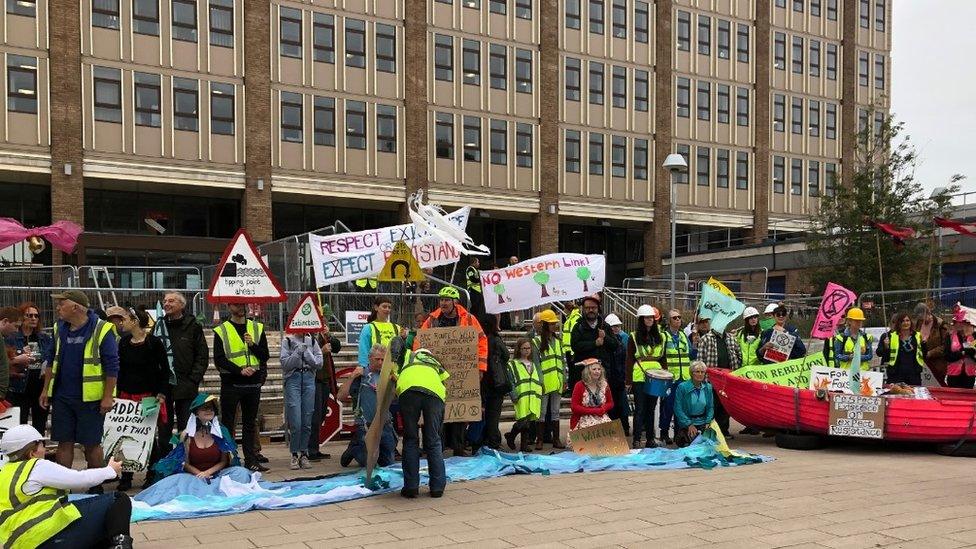Norfolk: What does the future hold for county's new transport and energy schemes?
- Published
A string of major projects aim to bring better connections and power to Norfolk as its communities continue to grow, but what are the latest developments for these big money schemes?
A47 dualling
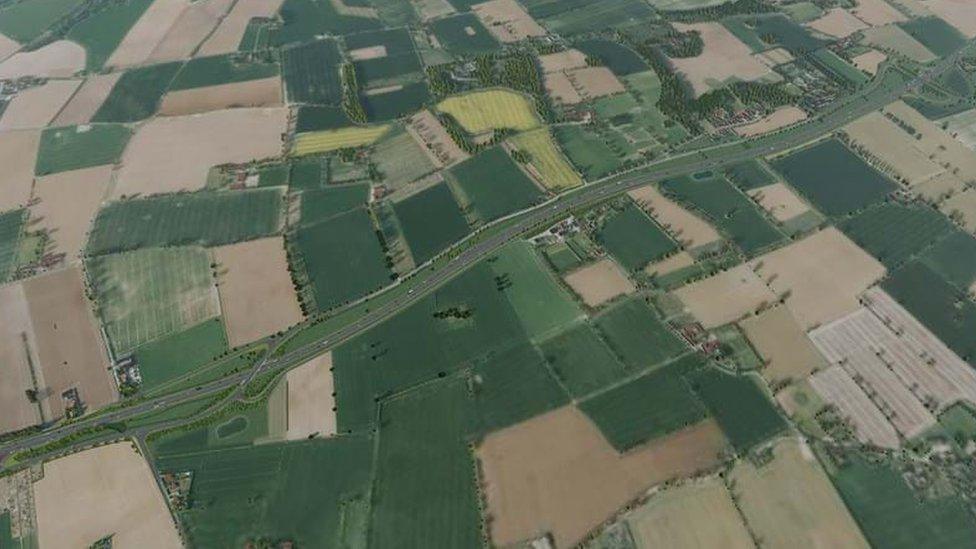
Work to dual the A47 from Blofield to North Burlingham could start next year
Turning three sections of the A47 into dual carriageways has been a long-term ambition of the National Highways agency, but despite improvements being agreed in 2014, work has yet to start.
Consultation on parts of the scheme finished earlier this month, with more expected to be held in January and February.
The £300m plans include proposals to dual sections of the road between North Tuddenham and Easton and from Blofield to North Burlingham.
It also includes proposed changes to the Thickthorn roundabout, on the edge of Norwich.
Hearings about the North Tuddenham to Easton scheme will take place on 5 and 6 January.
Hearings about the Thickthorn scheme - which would include a new slip road off the A11 - will start on 31 January and continue each day until 3 February.

Long Stratton bypass
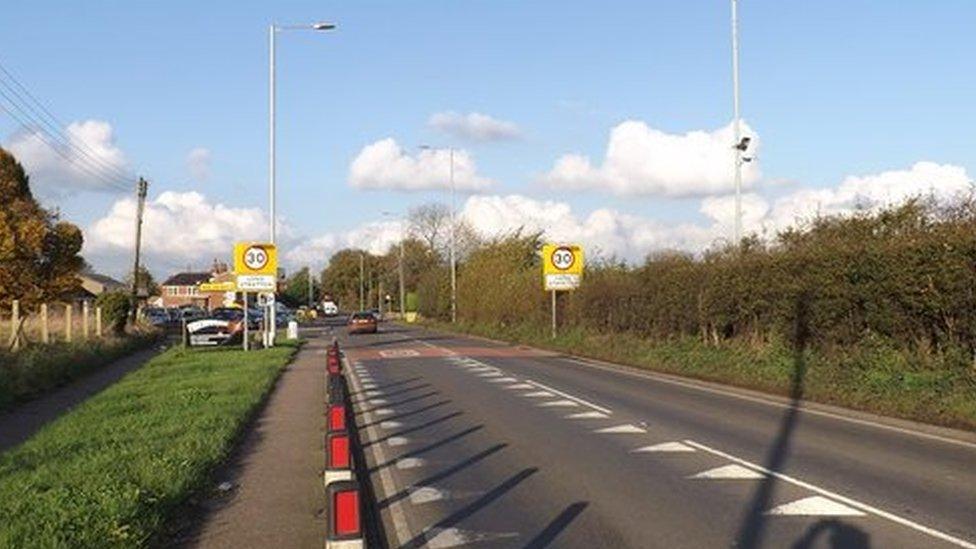
Work could start on the Long Stratton bypass in 2023
The future of the Long Stratton bypass finally looks secured after it was originally proposed 70 years ago.
In July, the government committed more than £26m towards the building of the new A140 bypass, meaning traffic will no longer have to go through the centre of Long Stratton.
The bypass will be a single carriageway of just under 4km (2.5 miles), leaving the existing A140 at Church Lane before rejoining just south of Oakside Farm.
A planning application is expected to go before a planning committee early next year.
The target date for work to start on construction is midway through 2023, with the road open to traffic before the end of 2024 - subject to planning approval.

Norwich Western Link
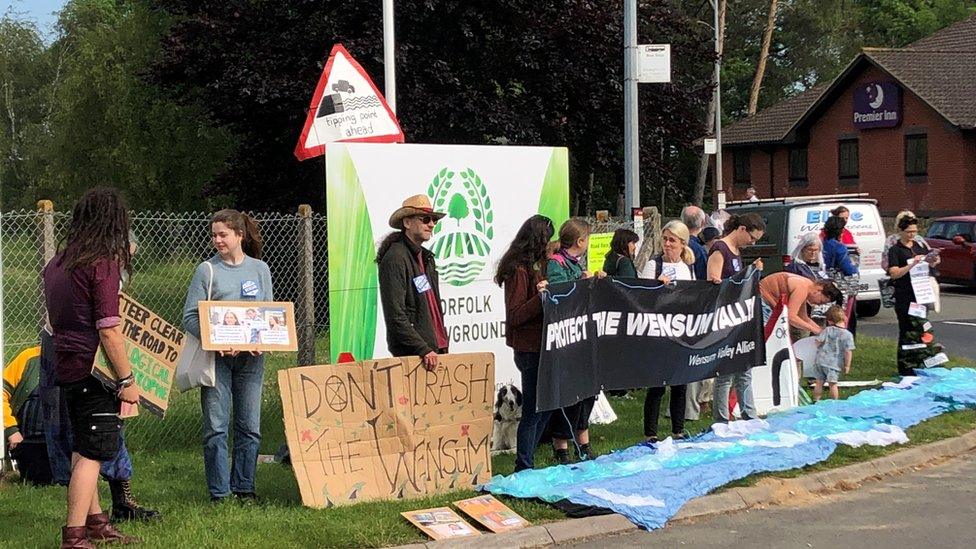
There have been protests against the Norwich Western Link road
The controversial road expansion still looks set to progress to the planning committee early next year despite some recent hiccups.
Norfolk County Council wants to build the 3.8-mile (6km) road to connect the A1067 Fakenham Road and the Broadland Northway (also known as the Northern Distributor Road) to the A47 to the west of Norwich.
But the final round of consultation due to take place in the autumn has not happened because the results of ecological surveys have yet to be fully analysed.
Opponents of the £198m road hope it could spell problems for the controversial scheme.
The council said it was too soon to say if it would delay the planning submission.
An application is due to be lodged with County Hall's own planning committee early in 2022.

New railway station
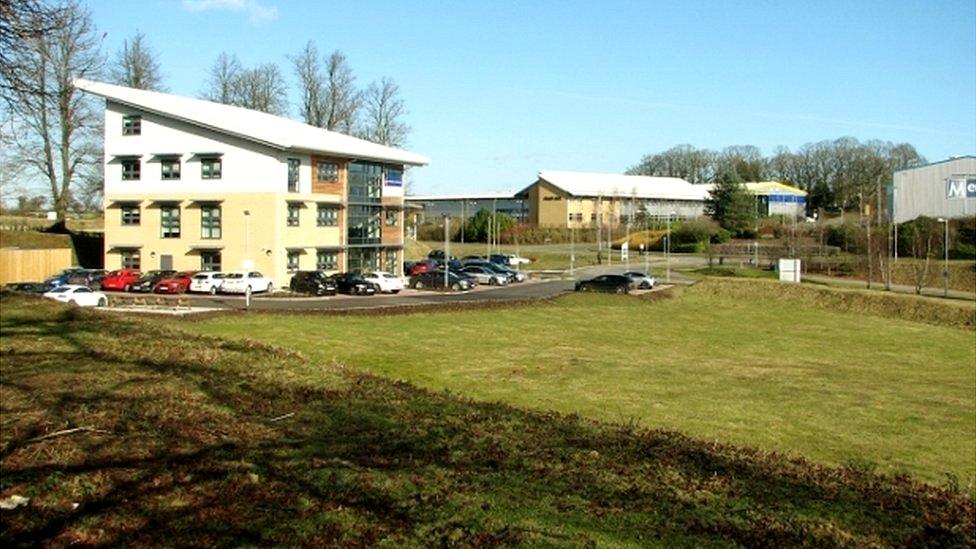
A case for a railway station on Broadland Business Park in Thorpe St Andrew, on the outskirts of Norwich, is still being examined
Hopes for a new £20m railway station on the edge of Norwich were rekindled earlier this year.
In 2016, Broadland District Council explored the idea of a new station at the Broadland Business Park.
Despite feasibility studies showing a strong business case, the plans stalled.
In December the plans were reborn at County Hall, with a further feasibility study due to be carried out in 2022.
Depending on that study, the plans would be developed over three to five years, and finally, construction - at a potential cost of £20m - could get under way in 2028.

Norfolk Boreas windfarm
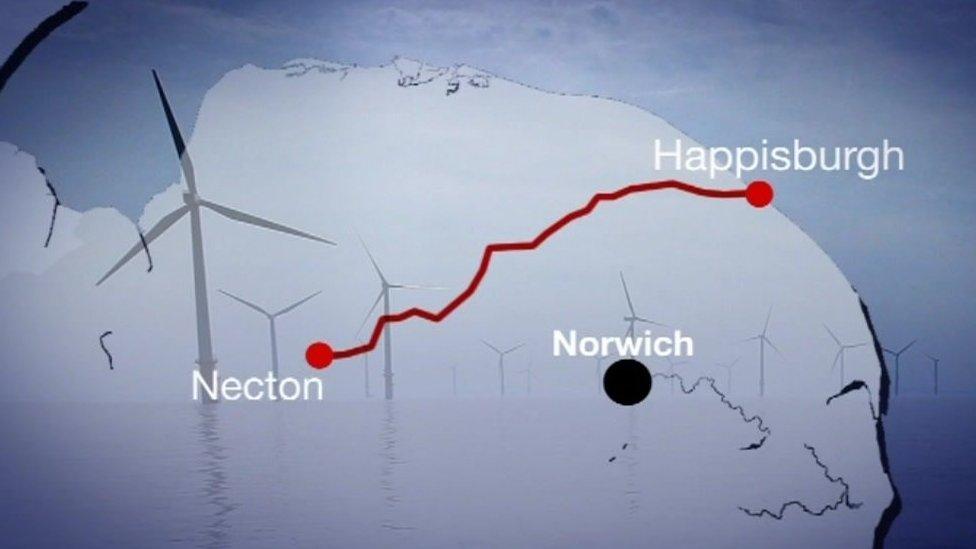
The route proposed to be taken by the windfarm cables to the substations
As the country tries to move away from polluting sources of energy, Norfolk is preparing to be the home of a new large windfarm 50 miles (80km) off the coast.
Swedish energy giant Vattenfall was granted a development consent for its Norfolk Boreas windfarm earlier this month.
Between next year and 2023 pre-construction work, ongoing detailed design plans and procurement processes will take place on the scheme which will consist of between 90 and 156 turbines.
Between 2023 and 2025 onshore works will take place on the project, which when completed overall will see a 40-mile (64km) cable route stretching from Happisburgh, on the north Norfolk coast, to an expanded substation at Necton, near Swaffham.
The next stage would be for offshore work to start in the mid to late 2020s, with the first power being generated in that period.

Find BBC News: East of England on Facebook, external, Instagram, external and Twitter, external. If you have a story suggestion email eastofenglandnews@bbc.co.uk
- Published10 December 2021
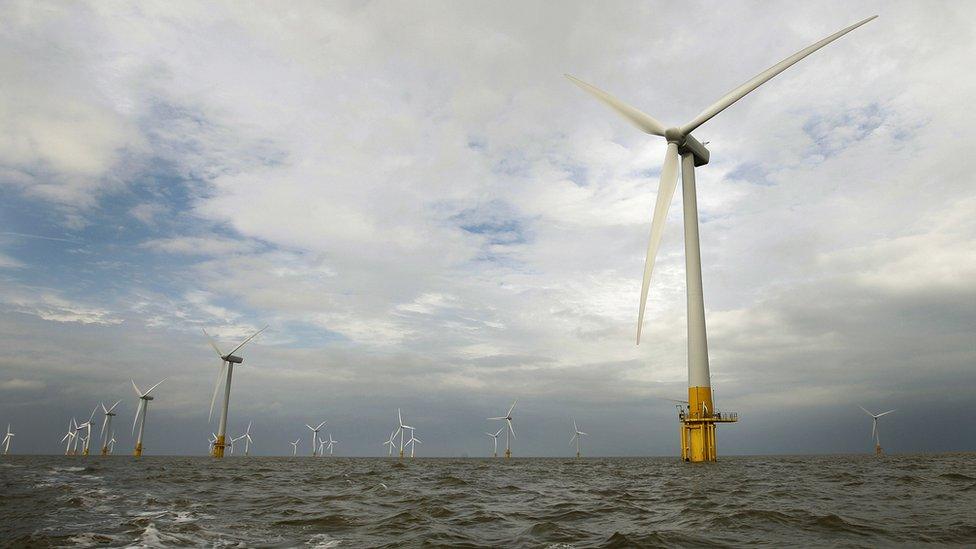
- Published27 October 2021

- Published13 October 2021

- Published24 July 2021
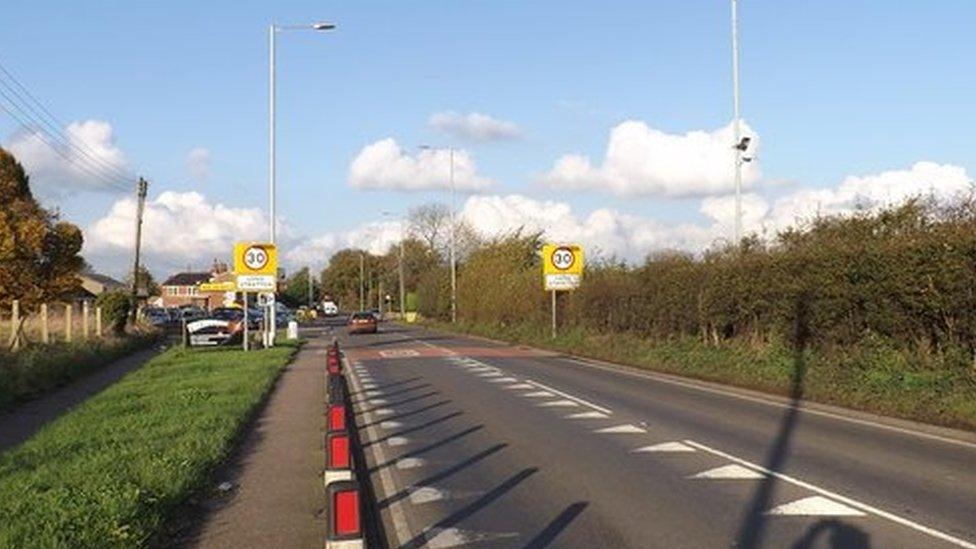
- Published7 June 2021
